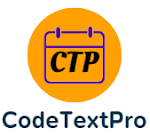Database Management System MCQ Question Answer
1. A relational database consists of a collection
of
• Tables
• Fields
• Records
• Keys
2. A ________ in a table represents a relationship among a set of
values.
• Column
• Key
• Row
• Entry
3. The term _______ is used to refer to a row.
• Attribute
• Tuple
• Field
• Instance
4. The term attribute refers to a ___________ of a table.
• Record
• Column
• Tuple
• Key
5. A collection of related data.
• Information
• Valuable information
• Database
• Metadata
6. DBMS manages the interaction between __________ and database.
• Users
• Clients
• End Users
• Stakeholders
7. Which of the following is not involved in DBMS?
• End Users
• Data
• Application Request
• HTML
8. Database is generally __________
• System-centered
• User-centered
• Company-centered
• Data-centered
9. DBMS is a collection of what enables users to create and maintain a
database?
• program
• translator
• language activity
• key
10. What is the full form of DBA?
• Database Access
• Database Administrator
• Database Authority
• None of the these
11. The following are components of a database except
• user data
• indexes
• meta data
• reports
12. What is ‘data about data’?
• directory
b. data bank
c. metadata
d. information
13. Which level describes ‘how the data is actually stored’?
• physical level
b. logical level
c. view level
d. none of these
14. A relational database consists of a collection of which of the
following?
• tables
• fields
• records
• keys
15. Which term used to refer to a row in a table?
• attribute
• tuple
• field
• instance
16. Which database level is closest to the users?
• External
• Internal
• Physical
• Conceptual
17. Which of the following is not a Schema?
• Database Schema
• Physical Schema
• Critical Schema
• Logical Schema
18. Which of the following is a Data Model?
• Entity-Relationship model
• Relational data model
• Object-Based data model
• All of the above
19. Logical design of database is called
• Database Instance
b. Database Snapshot
c. Database Schema
d. All of the above
20. The restrictions placed on the data.
• Relation
b. Attribute
c. Parameter
d. Constraint
21. A characteristic of an entity.
• Relation
• Attribute
• Parameter
• Constraint
22. In an ER model, which one is described in the database for storing
its data?
• entity
• attribute
• relationship
• notation
23. Entities are nothing else but
• Relations
• DBMS
• Attributes
• None of the above
24. Attributes correspond to
• Rows of a table
• Columns of a table
• Degree of a table
• None of the above
25. A set of tuples at any given instant of time is called
• Table
• Row
• Extension
• None of the above
26. The number of tuples of a relation is its
• Degree
• Intention
• Cardinality
• None of the above
27. A relation with degree N , is known as
• N-ary relation
• 1-ary relation
• 2-ary relation
• None of the above
28. What is the cardinality of a table of 50 rows and 5 columns
• 50
• 5
• 250
• None of the above
29. What is the degree of a table of 50 rows and 5 columns
• 50
• 5
• 250
• None of the above
30. Anything which exists and is distinguishable form one another is
known as
• Entity
• Attribute
• Relationship
• None of the above
31. An entity set that does not have sufficient attributes to form a
primary key is a
• strong entity set.
• weak entity set .
• simple entity set.
• primary entity set.
32. In an E-R diagram attributes are represented by
• rectangle.
• square.
• ellipse .
• triangle.
33. In the relational modes, cardinality is termed as:
• Number of tuples
• Number of attributes
• Number of tables
• Number of constraints
34. Cartesian product in relational algebra is
• Unary operator.
• Binary operator.
• Ternary operator
• not defined
35. Which of the following are the properties of entities?
• Groups
• Table
• Attributes
• Switchboards
36. An ER model was introduced by
• E.F.Codd
• P.P.Chen
• Constantine
• None of the above
37. The full form of ER Diagram is
• Entity -Relationship Diagram
• Entity Relation Diagram
• Entity Rotation Diagram
• None of the above
38. Which of the following cannot be used to modify the data in a
database
• update
• insert
• delete
• drop
39. A logical description of some portion of database that is required
by a user to perform task is called
• System View
• User View
• Logical View
• Data View
40. In an ER model, ……………. is described in the database by storing its
data.
• Entity
• Attribute
• Relationship
• Notation







2 Comments
Exploring the Database Management System MCQ questions on CodeTextPro is a smart way to reinforce your concepts and test your prep. These multiple-choice sets cover key topics that often appear in exams. If you're juggling multiple tasks and wondering, Who can take my ATI TEAS for me?” you're not alone. Time management and smart study tools can truly make a difference in your academic journey.
ReplyDeleteEE8C35B827
ReplyDeletekiralık hacker
hacker arıyorum
kiralık hacker
hacker arıyorum
belek